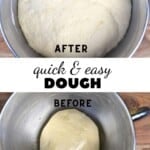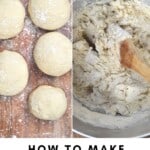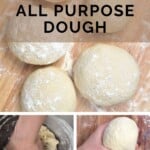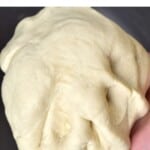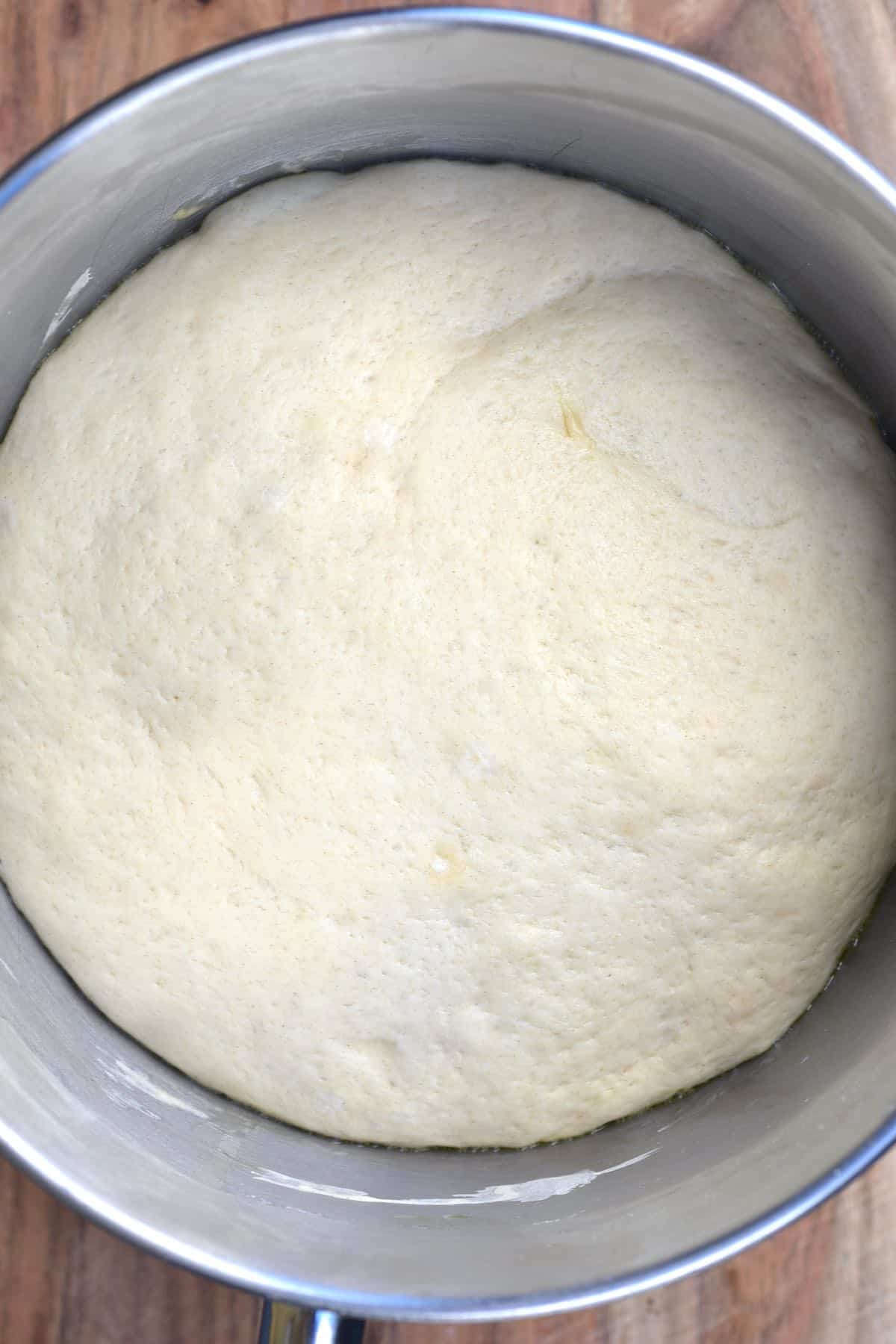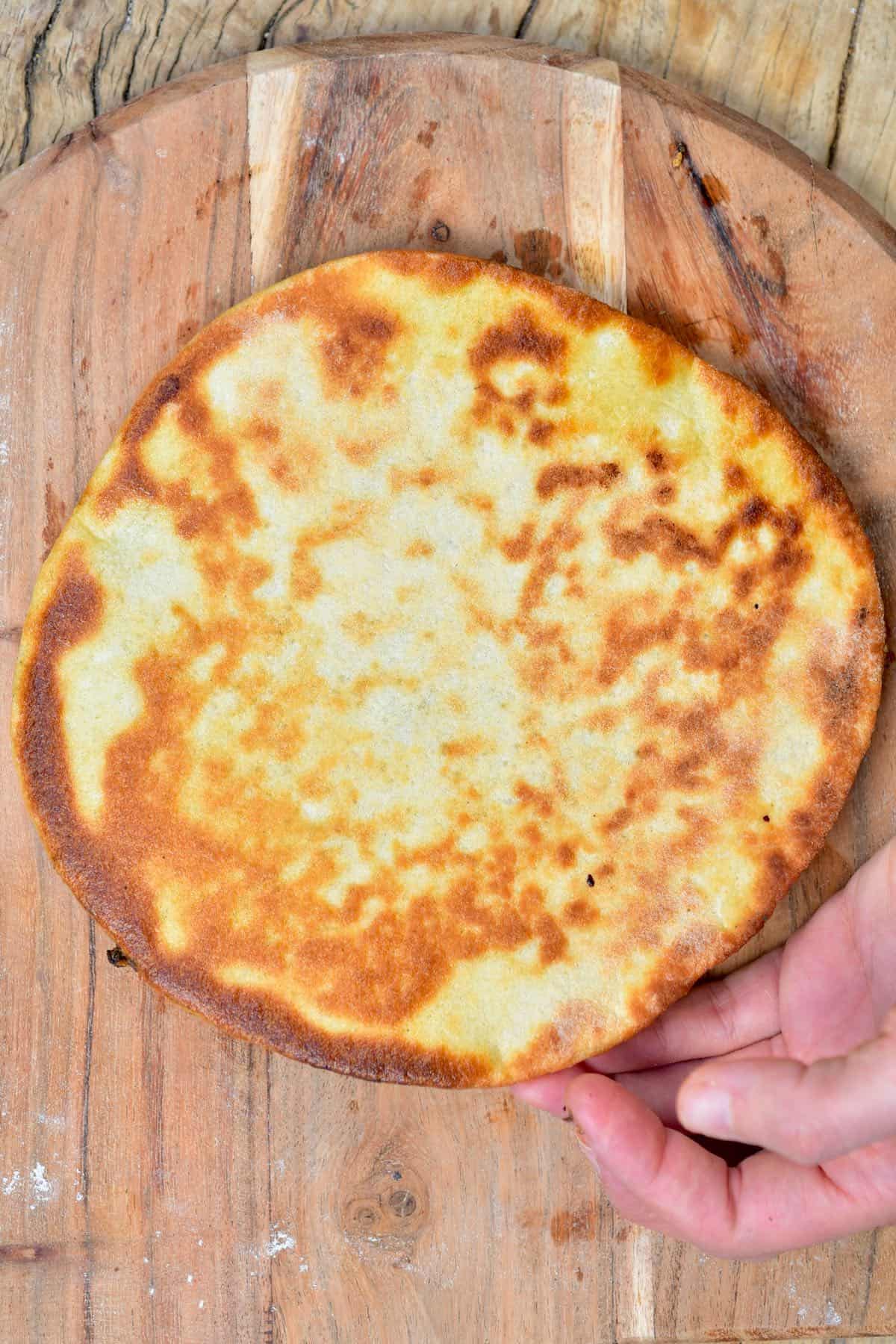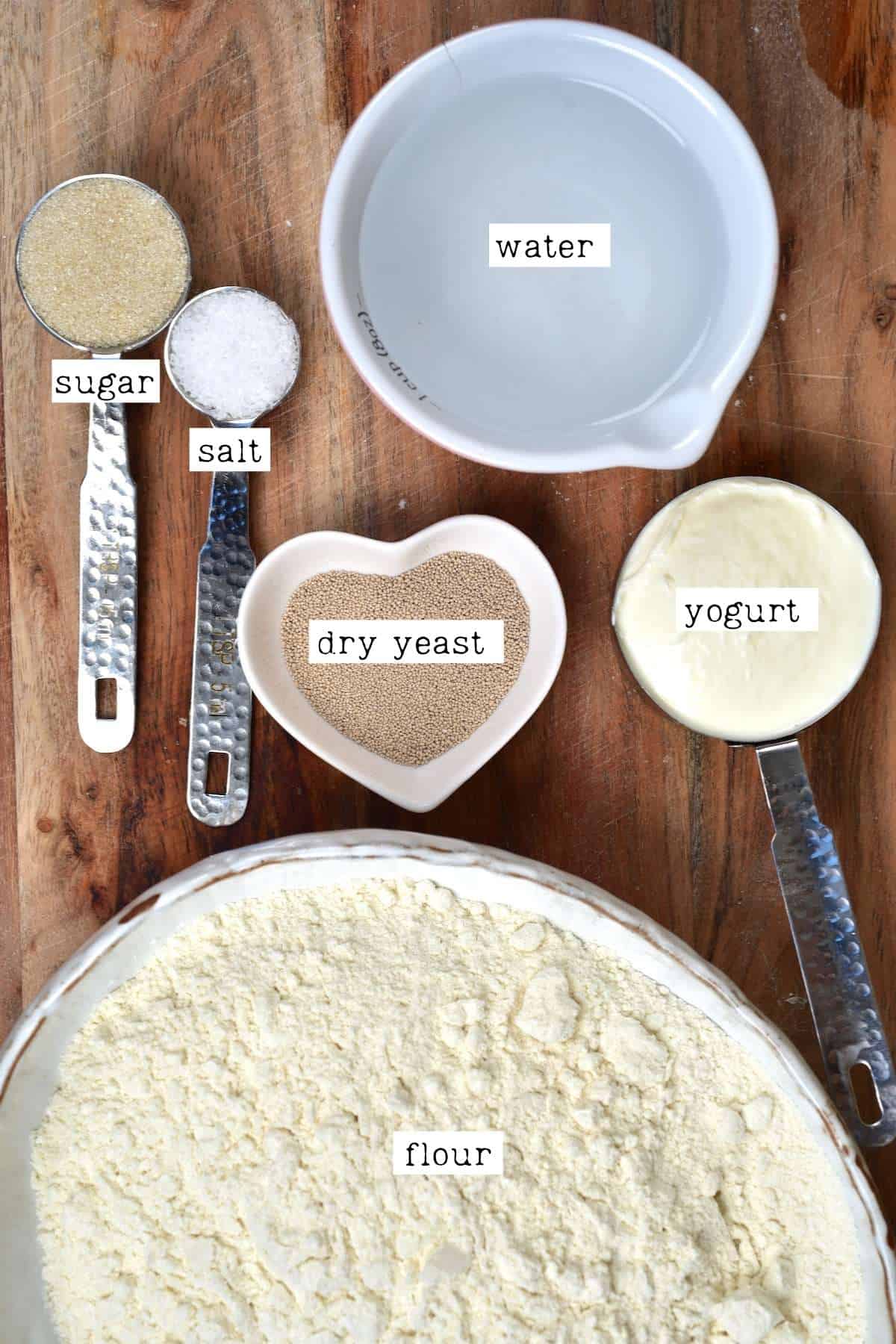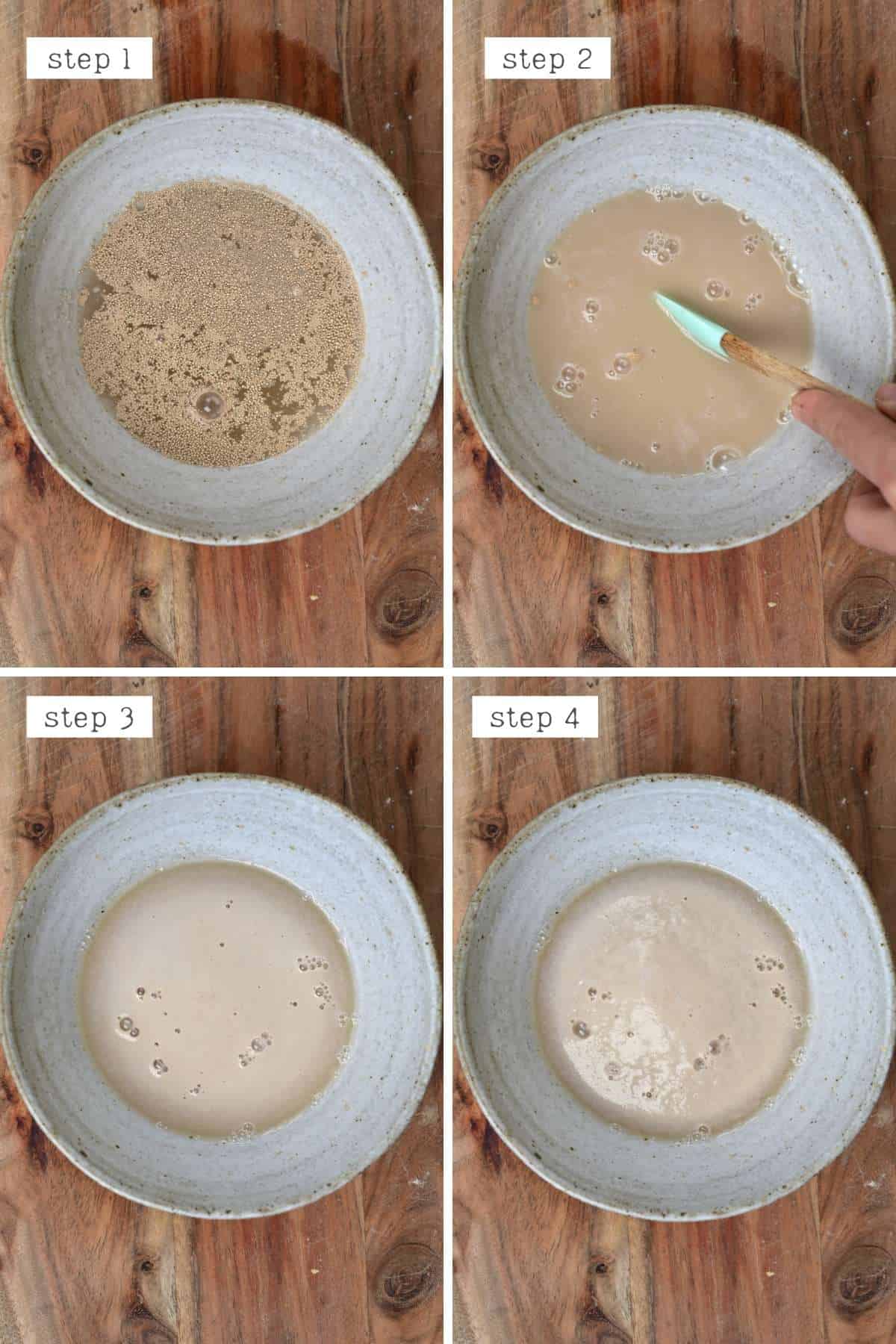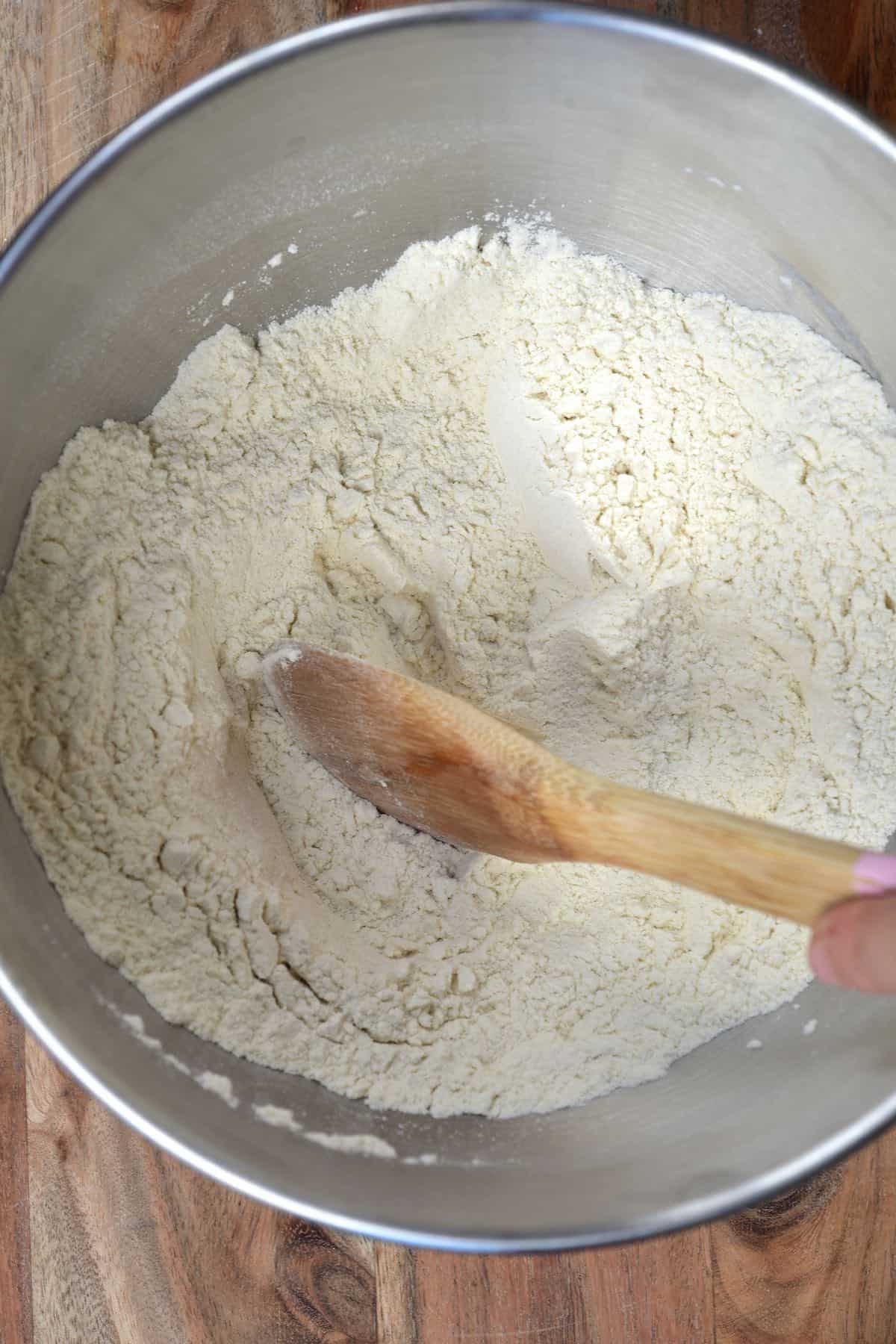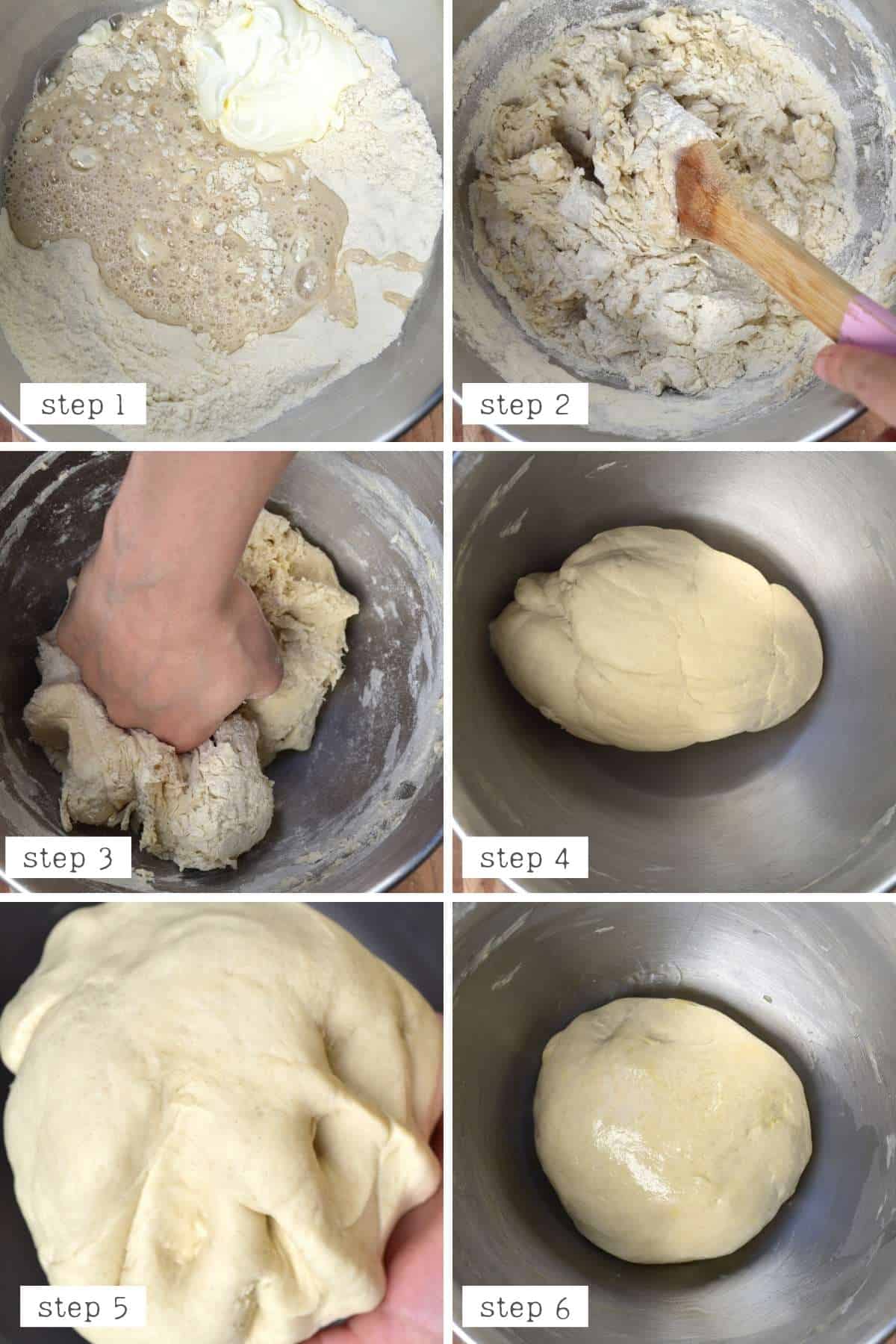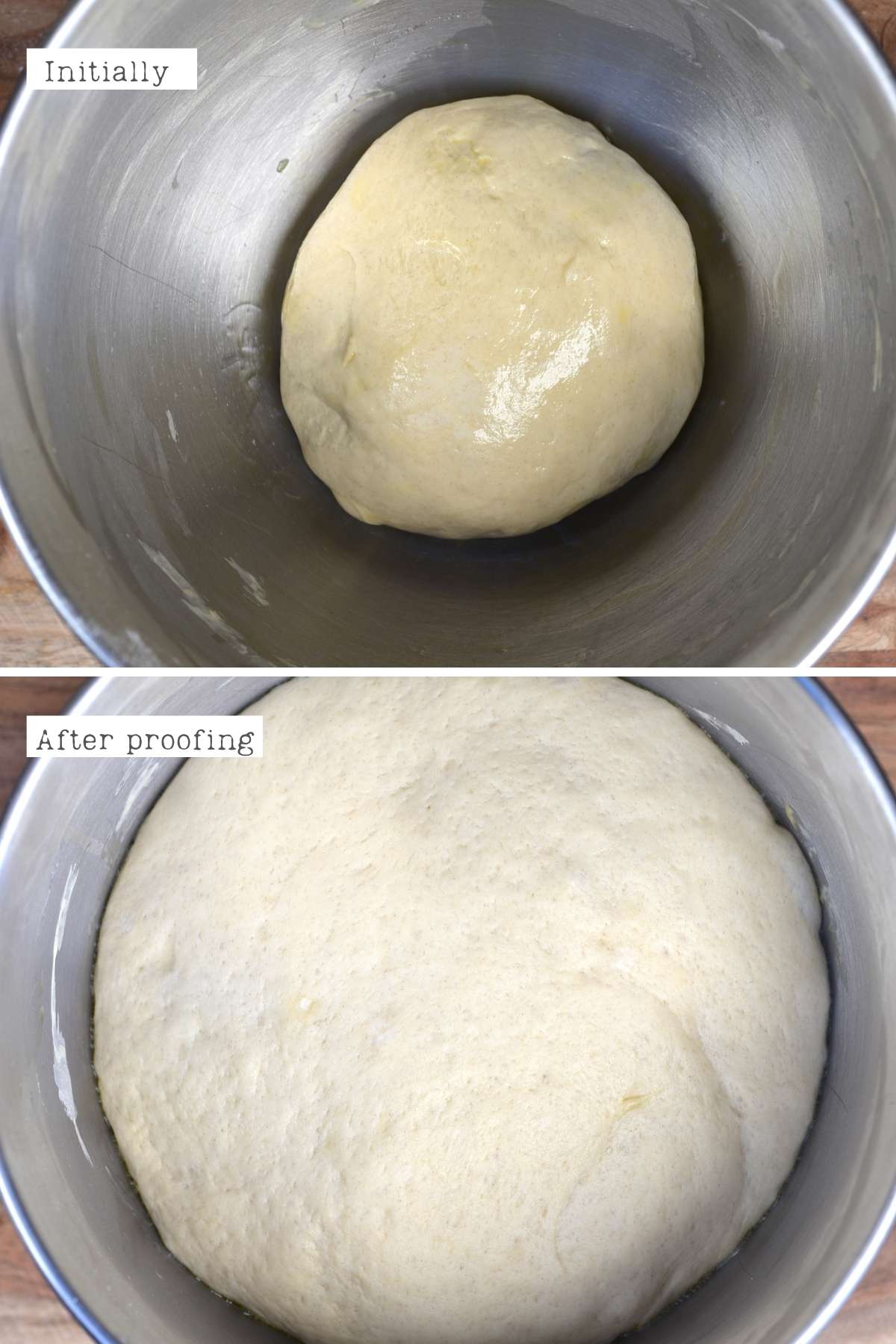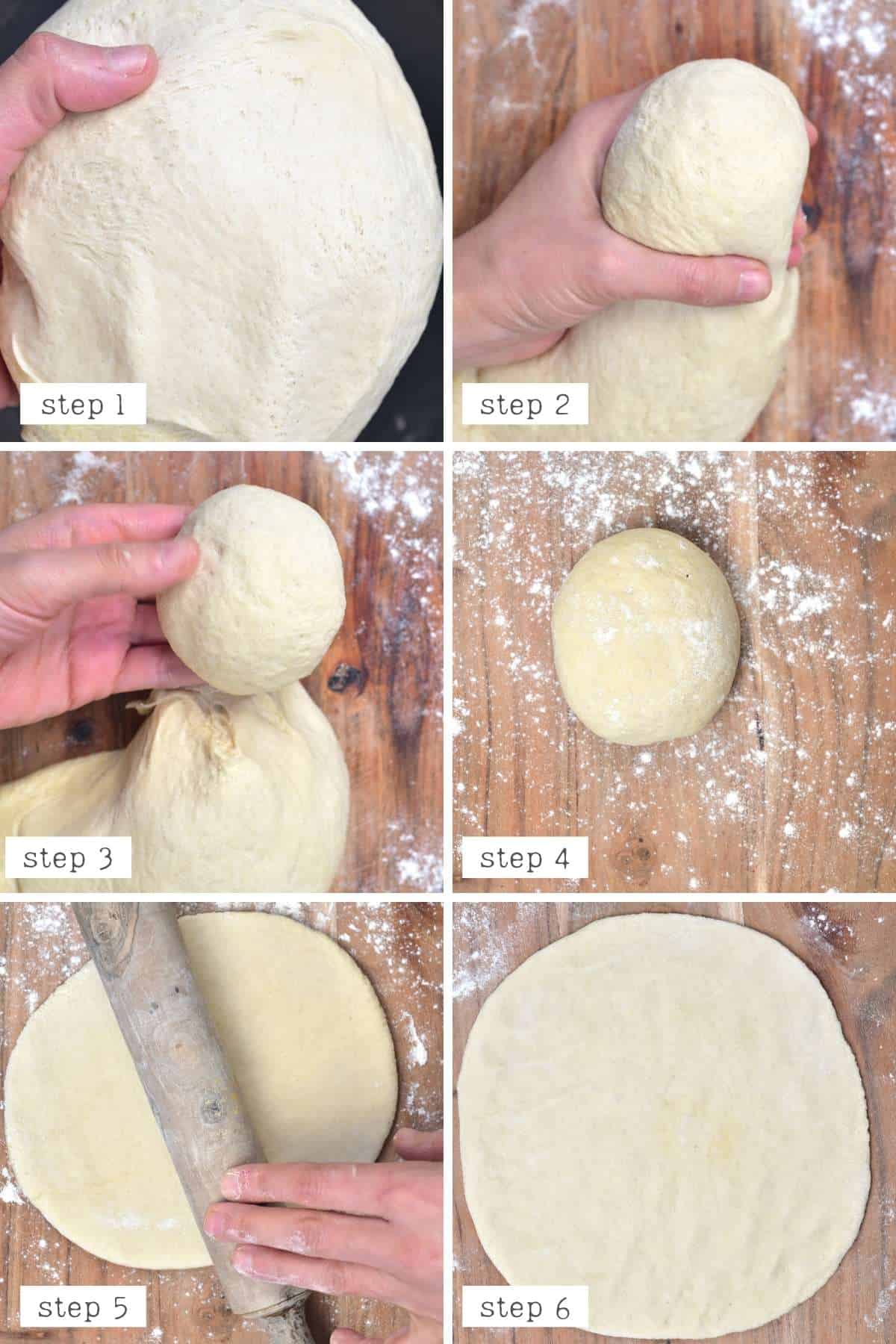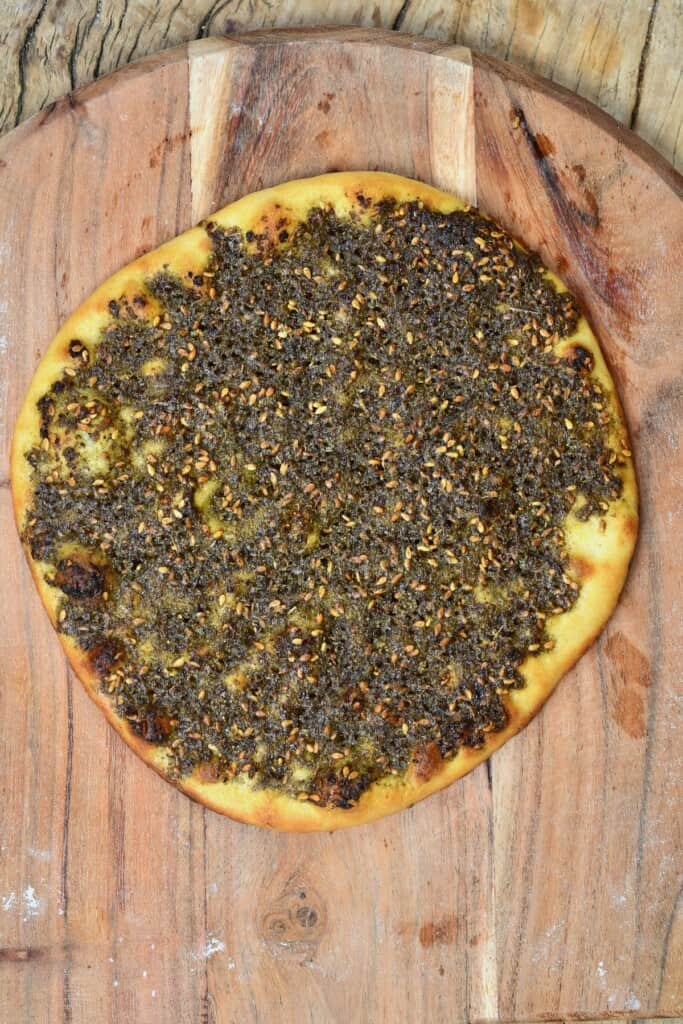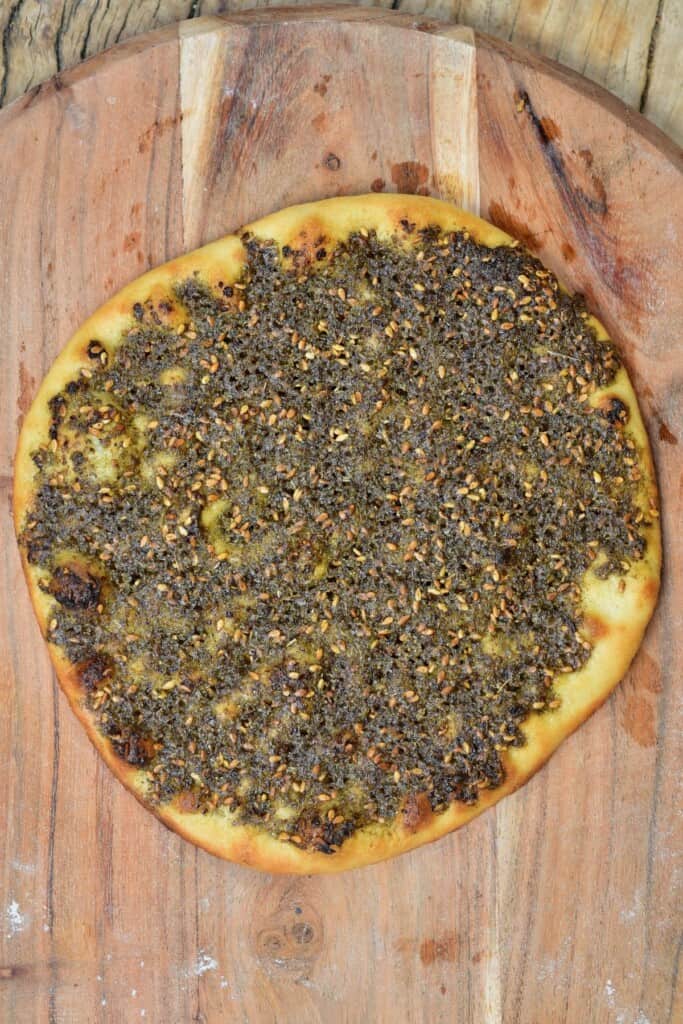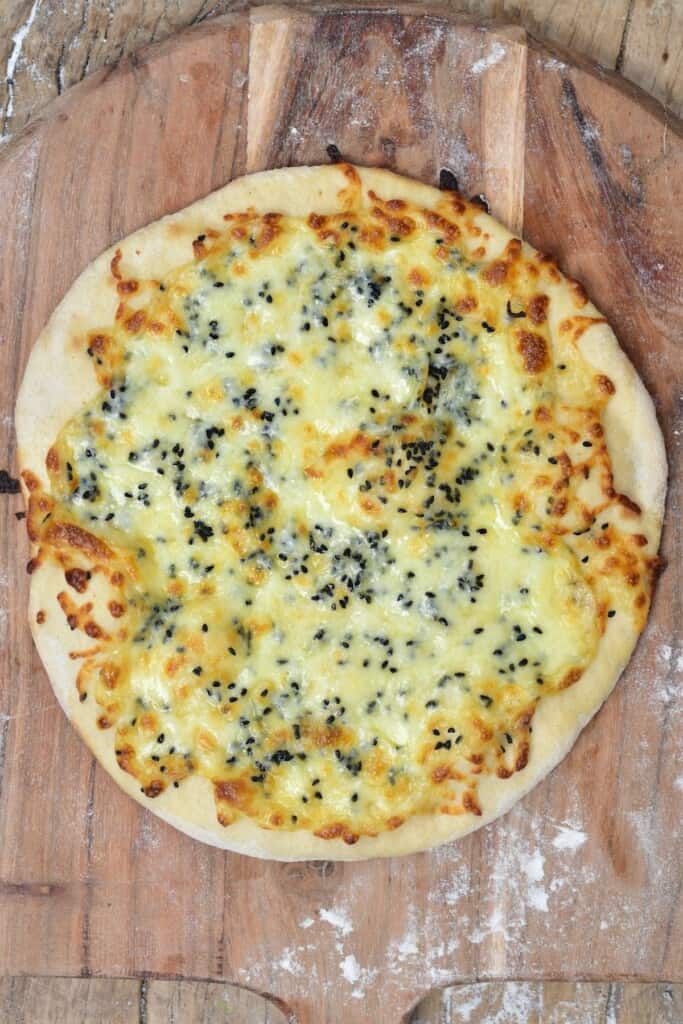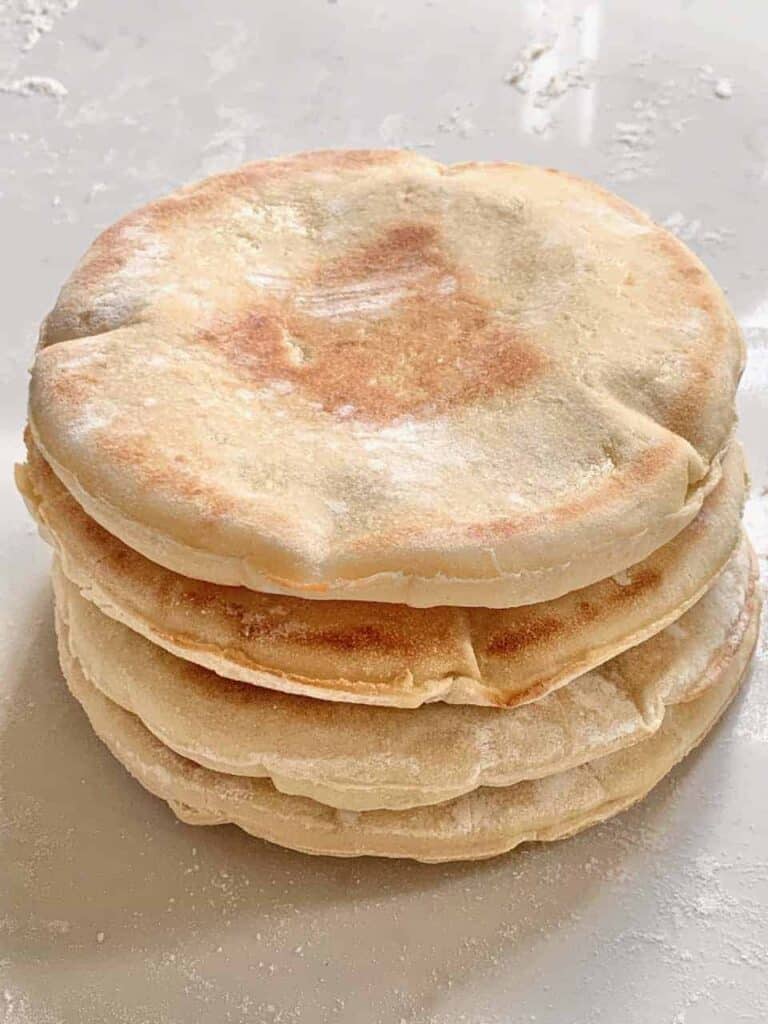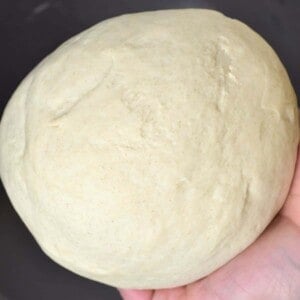When I first came across this dough, I was just looking for a simple recipe to make homemade manakish – a middle-eastern flatbread ‘pizza’ – I had no idea that this Middle Easter bread dough would become one of my most all-purpose use doughs in the kitchen. In fact, keep an eye out because I have tons of upcoming recipes to share with my favorite uses for this dough. Whether you want an easy pizza dough, calzone, pinwheel, fatayer, or Lebanese manakish dough – then this Middle Eastern bread dough will work for you. In fact, this dough joins the ranks of several other flatbread recipes I’ve shared including markouk saj bread, garlic naan, Turkish Ramadan pide, and traditional Middle Eastern Pita. Every time the smell of the freshly baking dough wafts through my kitchen, I’m transported back to my childhood, waiting impatiently to dig into fresh bakery-made za’atar manakish. Who knew it would be so simple to re-create this recipe at home?! All you need for this Arabic bread dough is just 4 ingredients and a simple process. While the dough does contain yeast, don’t let that scare you – it’s super simple.
The Ingredients
Flour: I used plain all-purpose flour. However, you could also use bread flour – which will add more ‘chew’ and fluffiness to the Middle Eastern bread. You could also experiment with wholewheat flour, but as it will produce denser results, I suggest using half whole-wheat, half all-purpose. Yeast: to leaven the bread and help it to rise. I use active dry yeast- check the notes for how to use ‘instant yeast’. Sugar: this will help activate the yeast while very subtly enhancing the flavor of the manakish dough. Yogurt: I use plain yogurt. You could use a plant-based yogurt instead or a neutral oil like olive oil. Water: you’ll need warm water (lukewarm) to activate the yeast.
How To Make Manakish Dough/ Middle Eastern Bread Dough
Step 1: Activate the yeast
First, add the water, sugar, and yeast to a small bowl, mix well and then allow it to stand for between 5-10 minutes for the yeast to activate. It should froth up and become quite bubbly during this time. Meanwhile, combine the sifted flour and salt in a large bowl.
Step 2: Mix and knead the dough
Add the yeast mixture and yogurt to the bowl, mix into a rough dough, and then knead for around 10 minutes until you have a smooth, elastic dough. When poked with a finger, the dough should bounce back again – if it doesn’t, knead it a little longer. The dough should be smooth and not sticky. If it’s a little sticky, then add an extra tablespoon of flour at a time. Likewise, if it’s too dry (crumbly), then add a tablespoon of water extra and then knead until you have a smooth texture. Knead the dough by hand, or use a stand mixer (which usually takes a couple of minutes less). You could also use a food processor with a dough blade, but this usually takes quite a lot less time due to the faster speed. Check after two minutes, then every 20-30 seconds after.
Step 3: Proof the dough
Form the dough into a rough ball and cover lightly with oil, then place back in the bowl. Cover the bowl with a kitchen towel or cling film and place it in a warm place to prove for between 45 minutes to an hour. During this time, it should double in size. If it’s particularly cold on that day/ where you are, then it may be best to turn the oven on its lowest temperature for 5-10 minutes, switch it off then allow the dough to rest in the switched-off oven.
Step 4: Use the Middle Eastern bread dough
At this point, you’re ready to use it for whatever recipe you’d please, which will affect your next step (i.e., how big, what shape, etc., the dough you use will be).
To use as Manakish (Manakeesh)
I was making manakish, so I used an inverted oven tray (a pizza stone will also work) in the oven at its highest temperature (for me, that’s 500ºF/260ºC). For manakish (manakeesh), I divided the dough into 5 balls for larger flatbread (you can weigh it for exact pieces, but I did it by eye). You can also roll out 8 medium-sized ones. Roll the dough out to around 1/4-inch thickness and shape into either circles or oblong shapes. Press your fingers into the dough all over the surface. This will create more space for toppings and will prevent the dough from puffing up too much in the oven. Then top with your toppings of choice – like this za’atar manakish or cheese manakish. Carefully transfer the Arabic bread dough to the inverted tray/pizza stone and bake for between 5-6 minutes until it’s lightly browned on the edges and underneath. Remove it from the oven and cool slightly before wrapping/covering it with a kitchen towel to keep the bread soft.
To Make Ahead & Store
Mahe ahead: if you don’t plan on using all the Middle Eastern bread dough at one time, you can store the prepared dough, wrapped tightly in plastic wrap, for up to 2 days. Store: the freshly baked bread can also be store in an airtight container or the fridge for up to five days. Enjoy at room temperature or warmed. Freezer: the baked bread (like manakish) is freezer-friendly for up to three months. Depending on how you use the dough and what fillings/toppings you use with it, this time may vary. Reheat: you can reheat the baked Middle Eastern flatbread from frozen in the oven at 250ºF/120ºC until warmed through (20-25 minutes usually). If heating from chilled or room temperature, then reduce the time in the oven.
For even softer, richer dough, you can add 1-2 tsp dry milk powder. Feel free to season the dough as preferred depending on the recipe; Italian seasoning, za’atar, garlic, and onion powder, etc. To use instant yeast instead of active dry yeast, reduce the amount by 25%. Why is yogurt added to the dough? When adding yogurt to the dough, it will yield softer, fluffier results. This is because the yogurt’s acidity relaxes the gluten for more tender results – without the use of fat like butter/oil. Why is my dough not rising? The most likely culprit is expired yeast. Alternatively, you may have killed the yeast if you use water that is too hot.
Related Recipes
Zaatar Bread (Manakish Za’atar) Cheese Manakish (Cheese Flatbread) The Best Authentic Homemade Pita Bread Homemade Garlic Naan Bread (Indian Flatbread) 2-Ingredient Sweet Potato Flatbread (Gluten-free) The Ultimate ONE Ingredient Potato Flatbread (Gluten-free Potato Bread) Easy No-Knead Turkish Bread (Ramadan Pide Bread) Homemade New York-Style Bagels (NY Bagel Recipe)
If you try this Middle Eastern/Manakish dough recipe, then let me know your thoughts and questions in the comments. I’d also really appreciate a recipe rating and would love to see your recreations – just tag @AlphaFoodie.
